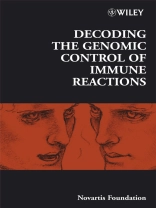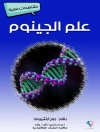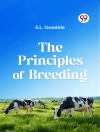This book explores existing and potential strategies for using the
genome sequences of human, mouse, other vertebrates and human
pathogens to solve key problems in the treatment of immunological
diseases and chronic infections. The assembled genome
sequences now provide important opportunities for solving these
problems, but a major bottleneck is the identification of key
sequences and circuits controlling the relevant immune
reactions. This will require innovative, interdisciplinary and
collaborative strategies of a scale and complexity we are only now
beginning to comprehend.
Specific problems addressed include the following:
* What kinds of information are we lacking to understand how the
genome sequence specifies the differentiation and response of
immune system cells, and system behaviour such as immunological
memory and tolerance?
* Which genome sequences and cellular circuits cause or prevent
pathological immune responses to foreign pathogens, allergens or
self-tissues?
* Which host and pathogen genome sequences and cellular circuits
explain the failure of sterilizing immune responses to
sophisticated human pathogens such as the agents of tuberculosis,
malaria, metazoan parasites and chronic viruses?
Containing contributions from a range of leading experts in the
field, this book provides an important new perspective for clinical
immunologists and basic researchers alike.
Mục lục
Introduction (Chris Goodnow).
Transcriptional regulatory networks in macrophages. (David A.
Hume, Christine A. Wells and Timothy Ravasi).
Discussion.
The RIKEN mouse transcriptome: lessons learned and implications
for the regulation of immune reactions (Christian
Schönbach).
Discussion.
Molecular pathways for lymphangiogenesis and their role in human
disease (Steven A. Stacker, Rae H. Farnsworth, Tara Karnezis,
Ramin Shayan, .
Darrin P. Smith, Karri Paavonen, Natalia Davydova, Carol
Caesar, .
Rachael Inder, Megan E. Baldwin, Bradley K. Mc Coll, Sally
Roufail, .
Richard A. Williams, Richard A. Hughes, Kari Alitalo
and.
Marc G. Achen).
Discussion.
General discussion I.
Specifying the patterns of immune cell migration (Jason G.
Cyster).
Discussion.
Human monogenic disorders that confer predisposition to specifi
c infections (Capucine Picard, Laurent Abel and
Jean-Laurent Casanova).
Discussion.
The genetic control of susceptibility to Mycobacterium
tuberculosis (W. J. Britton, S. L. Fernando, B. M. Saunders,
R. Sluyter and J. S. Wiley).
Discussion.
Th2 lymphoproliferative disorders resulting from defective LAT
signalosomes (Bernard Malissen, Ying Wang, Michael
Mingueneau and Marie Malissen).
Discussion.
Genetic analysis of systemic autoimmunity (Carola G.
Vinuesa and Matthew C. Cook).
Discussion.
Genetic resistance to smallpox: lessons from mousepox
(Gunasegaran Karupiah, Vijay Panchanathan, Isaac G. Sakala
and Geeta Chaudhri).
Discussion.
The Ac B/Bc A recombinant congenic strains of mice: strategies for
phenotype dissection, mapping and cloning of quantitative trait
genes (Anny Fortin, Eduardo Diez, Janet E. Henderson, Jeffrey S.
Mogil, Philippe Gros and Emil Skamene).
Discussion.
Genetic control of host-pathogen interactions in mice
(Gundula Min-Oo, Mary M. Stevenson, Anny Fortin and
Philippe Gros).
Discussion.
Mycobacterium tuberculosis and its ability to resist
immunity (Douglas Young and Anne O’Garra).
Discussion.
Systems genetics: the next generation in genetics research?
(Grant Morahan and Robert W. Williams).
Discussion.
Regulation of the immune system in metazoan parasite infections
(Rick Maizels).
Discussion.
Closing remarks (Chris Goodnow).
Contributor Index.
Subject Index.
Giới thiệu về tác giả
The Novartis Foundation is an international scientific and educational charity which promotes the study and general knowledge of science and in particular encourages international co-operation in scientific research.












